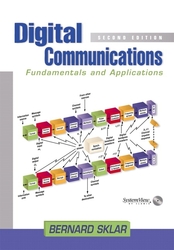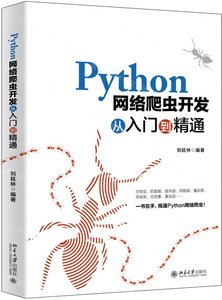Robust Modulation Methods and Smart Antennas in Wireless Communications
暫譯: 無線通信中的穩健調變方法與智慧天線
Bruno Pattan
- 出版商: Prentice Hall
- 出版日期: 1999-08-31
- 售價: $980
- 貴賓價: 9.8 折 $960
- 語言: 英文
- 頁數: 304
- 裝訂: Paperback
- ISBN: 0130220299
- ISBN-13: 9780130220295
-
相關分類:
天線相關 Antennas、Wireless-networks
已絕版
買這商品的人也買了...
-
 Data Mining: Concepts and Techniques
Data Mining: Concepts and Techniques$2,520$2,394 -
 SQL Server 2000 設計實務
SQL Server 2000 設計實務$650$514 -
 Universal Serial Bus System Architecture, 2/e (Paperback)
Universal Serial Bus System Architecture, 2/e (Paperback)$1,150$1,127 -
 Introduction to Algorithms, 2/e (Hardcover)
Introduction to Algorithms, 2/e (Hardcover)$990$970 -
 Computer Architecture: A Quantitative Approach, 3/e(精裝本)
Computer Architecture: A Quantitative Approach, 3/e(精裝本)$1,300$1,274 -
 Operating System Concepts, 6/e (Windows XP Update)
Operating System Concepts, 6/e (Windows XP Update)$1,050$1,029 -
 UML 與樣式徹底研究 (Applying UML and Patterns: An Introduction to Object-Oriented Analysis and Design and the Unified Process, 2/e)
UML 與樣式徹底研究 (Applying UML and Patterns: An Introduction to Object-Oriented Analysis and Design and the Unified Process, 2/e)$780$663 -
 Visual C#.NET 程式設計經典
Visual C#.NET 程式設計經典$650$514 -
 Linux C/C++ 網路程式設計
Linux C/C++ 網路程式設計$450$383 -
 資訊架構學網站應用 (Information Architecture for the World Wide Web, 2/e)
資訊架構學網站應用 (Information Architecture for the World Wide Web, 2/e)$680$537 -
 ASP.NET 程式設計徹底研究
ASP.NET 程式設計徹底研究$590$466 -
 STRUTS 實作手冊(Struts in Action: Building Web Applications with the Leading Java Framework)
STRUTS 實作手冊(Struts in Action: Building Web Applications with the Leading Java Framework)$690$538 -
 LDAP 系統管理 (LDAP System Administration)
LDAP 系統管理 (LDAP System Administration)$620$490 -
 Linux 驅動程式 (Linux Device Drivers, 2/e)
Linux 驅動程式 (Linux Device Drivers, 2/e)$880$695 -
 組合語言 (Assembly Language for Intel-Based Computers, 4/e)
組合語言 (Assembly Language for Intel-Based Computers, 4/e)$680$612 -
 Windows 驅動程式設計指南 (Programming the Microsoft Windows Driver Model, 2/e)
Windows 驅動程式設計指南 (Programming the Microsoft Windows Driver Model, 2/e)$890$703 -
 Windows 程式設計使用 MFC (Programming Windows with MFC, 2/e)
Windows 程式設計使用 MFC (Programming Windows with MFC, 2/e)$990$782 -
 RFID 技術與應用
RFID 技術與應用$480$379 -
 Embedded Linux 在 ARM9 S3C2410(PreSOCes)上實作
Embedded Linux 在 ARM9 S3C2410(PreSOCes)上實作$380$342 -
 ARM9 S3C2410 嵌入式 SOC 實作
ARM9 S3C2410 嵌入式 SOC 實作$350$315 -
 最新 Java 2 程式語言
最新 Java 2 程式語言$650$514 -
 SQL Server 2005 資料庫開發聖經
SQL Server 2005 資料庫開發聖經$890$757 -
 WPF 與 XAML 應用程式開發講座
WPF 與 XAML 應用程式開發講座$490$382 -
 Linux 作業系統之奧義
Linux 作業系統之奧義$480$379 -
 軟體測試實務講座─來自矽谷的技術經驗與心得分享
軟體測試實務講座─來自矽谷的技術經驗與心得分享$290$226
商品描述
Description:
2202J-0
Covers both terrestrial and satellite systems Maximizing wireless system capacity and performance: a practical tutorial
Robust Modulation Methods & Smart Antennas in Wireless Communications is a systematic, practical tutorial covering each key technology for maximizing the capacity and performance of wireless systems.
The book's reader-friendly coverage introduces spectral and power efficiencies within Shannon bounds, and key techniques for bandwidth-efficient modulation, including higher-order modulation waveforms, signal state-space diagrams, performance representations, and much more. Author Bruno Pattan reviews today's robust digital signal modulation methods; approaches for mitigating interference in spread spectrum systems; signal formats and performance specifications in terrestrial cellular; and the rapid evolution of smart antennas and smart arrays. Coverage includes:
- The dynamics of linear and continuous phase modulations in digital communications
- Fundamentals of error correction coding
- Trellis-coded modulation, its advantages, and factors that can degrade its performance
- Butler matrix beamforming networks, including planar array beams, multiple volumetric beams, and Butler matrix applications
- Side lobe cancellers in smart antenna applications, including single and multiple interferers
- Switched multi-beam smart antennas and adaptive arrays
The book contains extensive figures and illustrations throughout, making it easier to understand each technology and how it may be implemented. In particular, Pattan's thorough, up-to-the-minute coverage of smart antennas and smart arrays will enable wireless designers and other professionals to substantially increase the capacity of their systems.
Table of Contents:
1. In Pursuit of Bandwidth Efficiencies for Wireless Terrestrial and
Satellite Communications.
Introduction.
2. Bandwidth-Efficient Modulation Techniques.
Introduction. Bandwidth and Power Efficiency Plane. Conclusions. References.
3. Higher Order Modulation
Methods.
Introduction. Signal State Space
Diagrams. Performance Representations. Conclusions. Glossary of Terms.
References.
4. Dynamics of Linear and Continuous Phase Modulation Methods in Digital
Communications.
Introduction. Linear Modulation.
Continuous Phase Modulation. Phase Trellises in CPM. GMSK Modulation. Tamed
Frequency Modulation (TFM). Signal Orthogonality. Conclusions. References.
5. Error Control Coding.
Introduction. Code Families.
Code Performance. Block Coding. Convolutional Encoding. Concatenated Coding.
Interleaving. Coding Break-through. Conclusions. References.
6. Trellis Coded Modulation (Codulation).
Introduction. The Theory. Attributes of Trellis Coded Modulation. Practical
Systems. Performance Degraders. Conclusions. Glossary of Terms. References.
7. Spread Spectrum Communication Systems.
Introduction. Spread Spectrum Techniques. Code Generation. Codes for Spread
Spectrum Multiplexing. Spread Spectrum Interference Analysis. The Multipath
Phenomenon. Purely Random or Pseudo-Random— What's the Difference? Conclusions.
Glossary of Terms. References.
8. Terrestrial-based Wireless
Communications.
Introduction. Frequency Bands
of Operation. Interference Analysis. Increasing Capacity. Cellular Standards.
Personal Communications Service. Conclusions. References.
9. The Butler Matrix.
Introduction. Planar Array
Beams. Multiple Volumetric Beams. Butler Array Application. Conclusions.
References.
10. Sidelobe Cancellers in Smart Antenna Applications.
Introduction. Single Interferer Sidelobe
Canceller. Multiple Interferers. Conclusions. References.
11. A Look at Switched-Beam Smart Antennas.
Introduction. Trunking Efficiency. Smart
Antennas. Configurations. Conclusions. References.
12. Deterministic Signals, Random Noise, and Coherent Noise (Pseudo)
Combining in an Array
Antenna.
Introduction. Coherent
Signals. Coherent Noise. An Adaptive Array in a Quiescent Signal Field.
13. Adaptive Arrays in Cellular
Communications.
Introduction. The
Theory. Simulation Results. Conclusions. References.
14. Summary Smart Antennas in Cellular Communications.
Introduction. Adaptive Array Genre. Where Are
Smart Antennas Going? Conclusions.
A. Gaussian Low-Pass Filter.
B. Scattering Matrix of the Quadrature
Hybrid.
C. Example of Trunking and Erlang Tables.
D. Glossary of
Terms.
Index.
The Author.
商品描述(中文翻譯)
描述:
2202J-0
涵蓋地面和衛星系統,最大化無線系統的容量和性能:實用教程
《無線通信中的穩健調變方法與智能天線》是一本系統性的實用教程,涵蓋了最大化無線系統容量和性能的每一項關鍵技術。
本書以讀者友好的方式介紹了香農界限內的頻譜和功率效率,以及帶寬高效調變的關鍵技術,包括高階調變波形、信號狀態空間圖、性能表示等。作者布魯諾·帕坦(Bruno Pattan)回顧了當今穩健的數字信號調變方法;減輕擴頻系統干擾的方法;地面蜂窩系統中的信號格式和性能規範;以及智能天線和智能陣列的快速演變。內容包括:
- 數字通信中線性和連續相位調變的動態
- 錯誤更正編碼的基本原理
- Trellis編碼調變、其優勢及可能降低其性能的因素
- 巴特勒矩陣波束形成網絡,包括平面陣列波束、多個體積波束和巴特勒矩陣應用
- 智能天線應用中的旁瓣消除器,包括單個和多個干擾源
- 切換多波束智能天線和自適應陣列
本書包含大量圖形和插圖,使每項技術及其實施方式更易於理解。特別是,帕坦對智能天線和智能陣列的全面、最新的介紹將使無線設計師和其他專業人士能夠顯著提高其系統的容量。
目錄:
1. 追求無線地面和衛星通信的帶寬效率。
引言。
2. 帶寬高效調變技術。
引言。帶寬和功率效率平面。結論。參考文獻。
3. 高階調變方法。
引言。信號狀態空間圖。性能表示。結論。術語表。參考文獻。
4. 數字通信中線性和連續相位調變方法的動態。
引言。線性調變。連續相位調變。CPM中的相位Treillis。GMSK調變。馴化頻率調變(TFM)。信號正交性。結論。參考文獻。
5. 錯誤控制編碼。
引言。編碼家族。編碼性能。區塊編碼。卷積編碼。串接編碼。交錯。編碼突破。結論。參考文獻。
6. Trellis編碼調變(Codulation)。
引言。理論。Trellis編碼調變的特性。實用系統。性能降低因素。結論。術語表。參考文獻。
7. 擴頻通信系統。
引言。擴頻技術。編碼生成。擴頻多路復用的編碼。擴頻干擾分析。多徑現象。純隨機或偽隨機——有何區別?結論。術語表。參考文獻。
8. 基於地面的無線通信。
引言。操作頻段。干擾分析。增加容量。蜂窩標準。個人通信服務。結論。參考文獻。
9. 巴特勒矩陣。
引言。平面陣列波束。多個體積波束。巴特勒陣列應用。結論。參考文獻。
10. 智能天線應用中的旁瓣消除器。
引言。單個干擾源旁瓣消除器。多個干擾源。結論。參考文獻。
11. 切換波束智能天線概述。
引言。幹線效率。智能天線。配置。結論。參考文獻。
12. 確定性信號、隨機噪聲和相干噪聲(偽)在陣列天線中的組合。
引言。相干信號。相干噪聲。在靜止信號場中的自適應陣列。
13. 蜂窩通信中的自適應陣列。
引言。理論。模擬結果。結論。參考文獻。
14. 蜂窩通信中的智能天線總結。
引言。自適應陣列類型。智能天線的未來走向?結論。
附錄:
A. 高斯低通濾波器。
B. 四分之一混合器的散射矩陣。
C. 幹線和艾朗表的示例。
D.術語表。
索引。
作者。






























